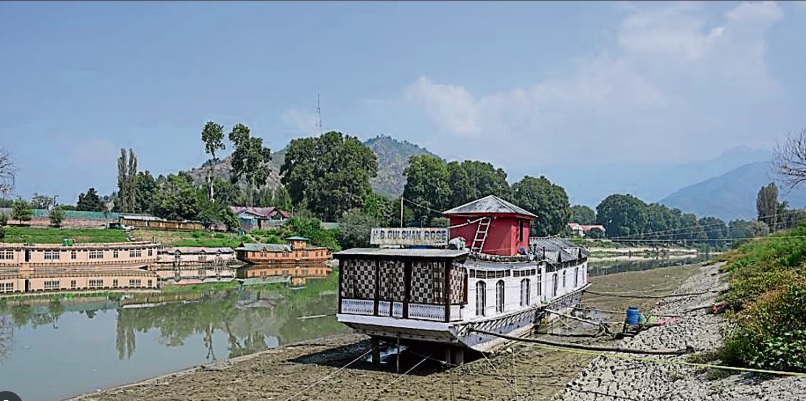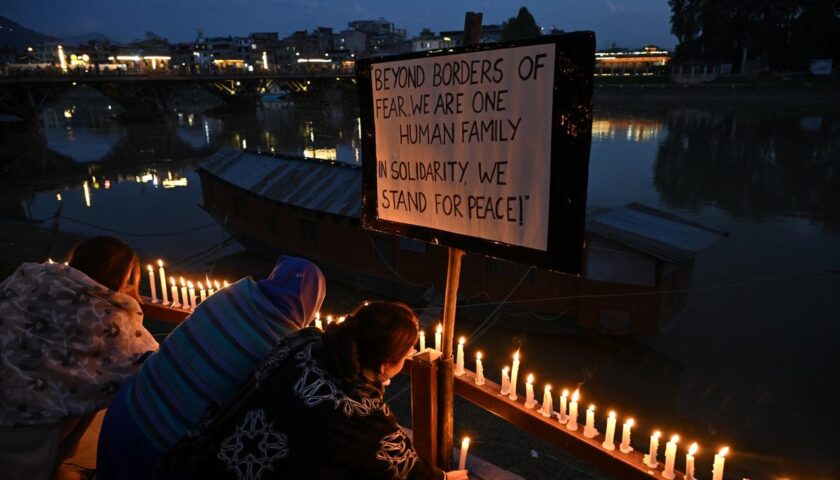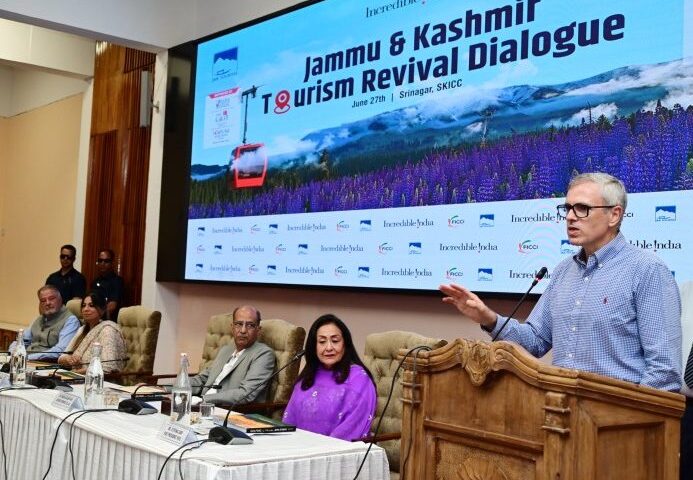Dry weather and above normal temperatures in Kashmir over seven weeks have adversely affected horticulture production, particularly apple, but have proved good for paddy crop, experts said. The weather has also led to a fall in the water level of Jhelum and other water bodies.
Kashmir is India’s largest apple grower, producing around 20 lakh metric tonnes of apples every year.
They added that if the rain scarcity continues, it will have a negative impact on Saffron and potato production in the region.
The Valley is experiencing high temperatures with heatwave to severe heatwave at Qazigund and Kokernag. In Kokernag and Qazigund, the temperatures are being recorded around 6°C above normal between 31.5°C and 32.5°C. Similarly, other stations of Kashmir, including summer capital Srinagar, are recording between 32°C and 33.5°C, around 4°C above normal. On Tuesday, the Valley saw record breaking severe heatwave. Srinagar recorded a maximum temperature of 34.2°C, 6.0°C above normal and the second highest tally in September since 1891.
Mohammad Amin, technical officer in the horticulture department, said that no rains and the higher temperatures have caused the problem of maturing in fruits, particularly apples.
“The size and colour has not developed fully, causing the quality to deteriorate. In coming days, we will witness the fruit production to reduce particularly that of red delicious apple and its other varieties,” he said.
“Over 75% of our horticulture sector is rain fed and Red Delicious is our main variety,” he said. “I don’t remember experiencing such hot weather in September in my life. This is so uncomfortable. Water scarcity has also escalated,” said 53-year-old Haseena, who has a farm in the outskirts of the city.
Indian meteorological department’s J&K director Sonam Lotus said that the weather has remained hot and dry with little or no moisture due to stable atmospheric conditions.
“During prolonged dry spell, it is natural to experience high day temperatures,” he said. MeT deputy director Mukhtar Ahmad said that the main reason for the dry and hot weather was El Nino, a weather phenomenon where temperatures increase globally as warm surface waters from the west move east in the Pacific. “Since monsoon was weak, the weather remains dry,” he said. He added that the department does not expect major rain spells till September 20.
“There may be cloudy weather on September 17 and 18, rest there will be no major change,” he said.The valley witnessed major deficiency in rainfall in August and September, Srinagar recording lowest rainfall in 25 years in August.
However, there is relief for the paddy farmers as the weather conditions have proved good for the crop. Agriculture department director M Iqbal Choudhary said, “Paddy is a summer crop there was alternate wetting and drying this year, the crop has achieved good growth. It is at yellow stage and some parts may start harvesting the crop in next 10 days,” Choudhary said. He said that the weather will help to sow Rabi crops early.
He, however, said that there was a desperate need of rainfall in the coming few weeks for potatoes and saffron which is cultivated in August.
Tourism unaffected
Tourism stakeholders say that the inflow tourists to Kashmir is good and the weather has not had a major impact.
“This is hot weather by Kashmir standards but has not made any impact for those visiting the region. In-fact, the tourist inflow in August and September is more than what it was last year,” said tourism director Raja Yaqoob Farooq.






